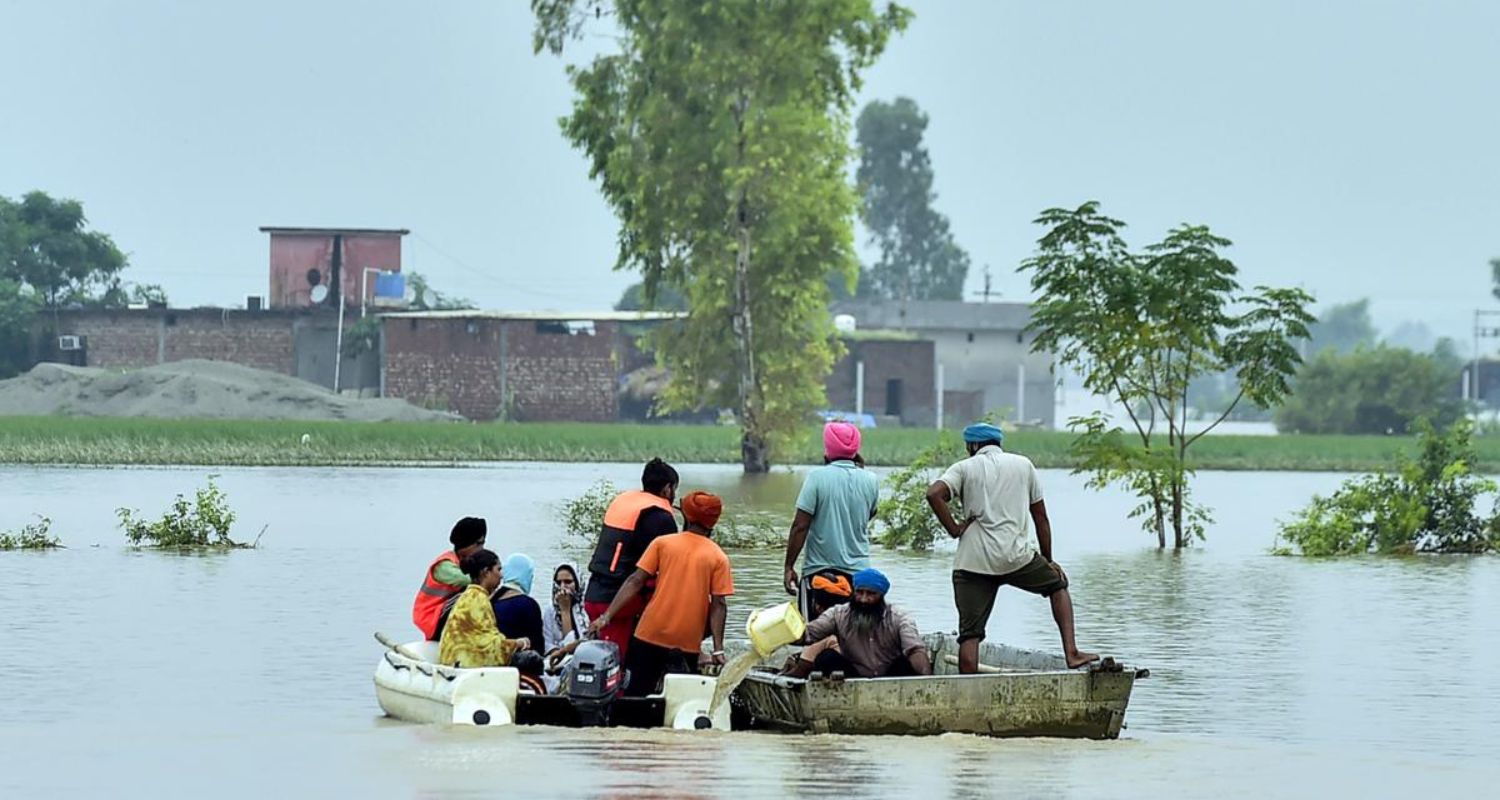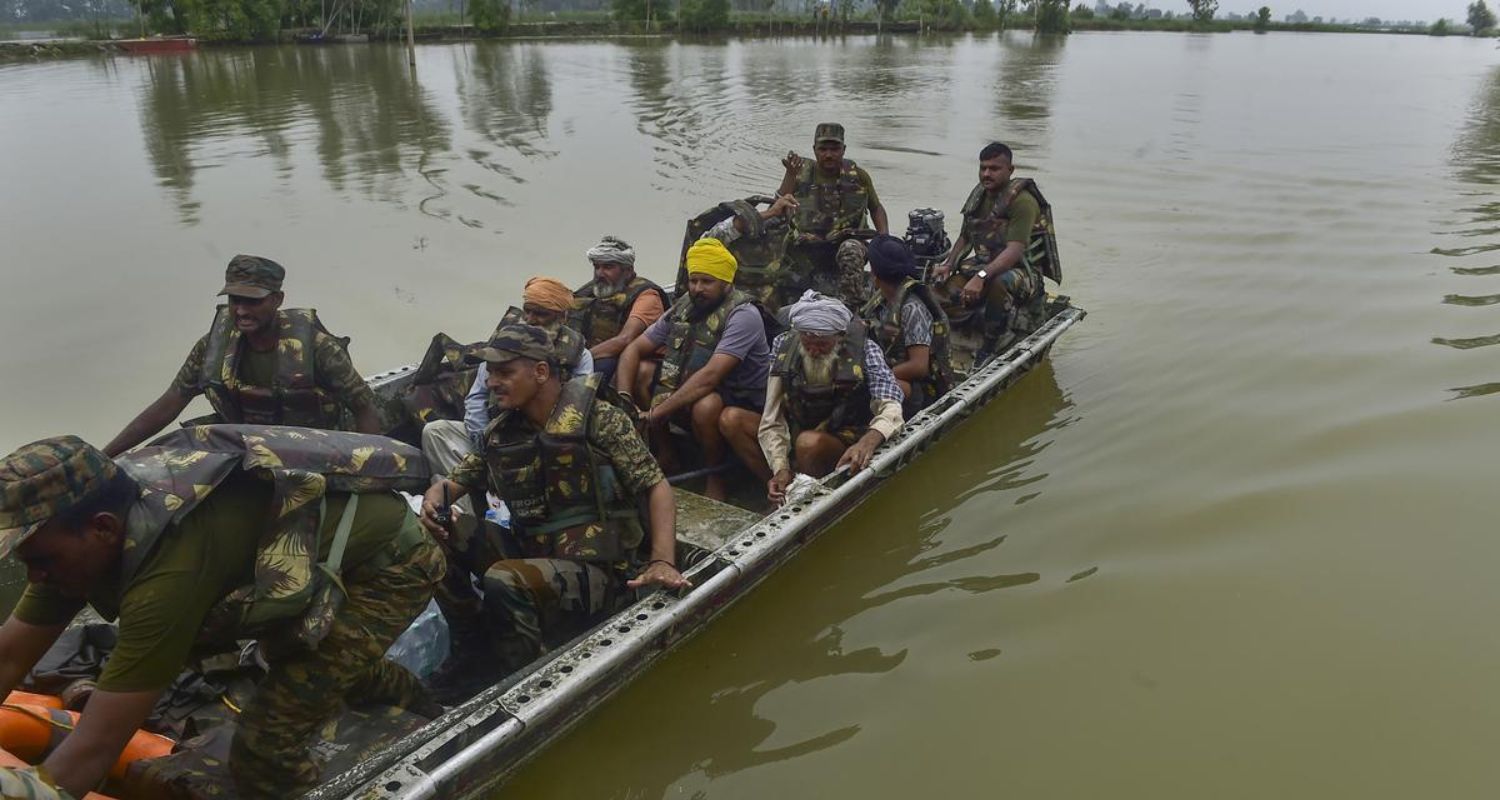At least 29 people have been killed and thousands have been displaced due to severe flooding in Punjab caused by heavy monsoon rains and water released from dams. With more than 1,300 villages under water and numerous districts severely affected, officials are referring to these floods as the "worst floods in recent history."
The situation is so dire that Prime Minister Narendra Modi, upon his return from China, spoke with Punjab Chief Minister Bhagwant Mann to assess the damage and offer federal assistance.

In August alone, Punjab received 253.7 mm of rain, which is 74 pc more than usual and the most in 25 years. The Sutlej, Beas, and Ravi rivers, along with a number of smaller seasonal streams, have overflowed due to the unrelenting rain. Homes and large tracts of farmland have been submerged by the Ravi river, which has risen to more than ten times its usual width in some places.
According to official data, more than 6,582 people have been moved to 122 relief camps, though many, especially in Hoshiarpur, are choosing to stay close to their homes and livestock by sheltering in tractor-trolleys. The worst-hit districts include Pathankot, Gurdaspur, Fazilka, Kapurthala, Tarn Taran, Ferozepur, Hoshiarpur, and Amritsar.

A Looming Threat: The Bela Encroachments
A significant and expanding issue has been brought to light by the floods: the extensive encroachment of "Bela" lands. Over the past 20 years, these areas—which are historically part of the riverbed between two Sutlej streams—have been unlawfully turned into permanent settlements. Initially used for cultivation, these lands gradually became home to thriving communities with permanent houses.
While these settlements were once cut off during the monsoon season, new bridges have provided year-round access, encouraging more people to build there. Now, with the floodwaters rising, around 50,000 people living in these villages are at extreme risk.
Also Read: Punjab floods: CM's letter to PM urges ₹60,000 cr funds release
Tushar Goyal, the Executive Engineer of the Drainage Department, confirmed that notices have been issued to those who have built homes on the riverbed under the Punjab Drainage Act.
However, department sources admit that enforcement has been limited to paperwork, with little to no action taken on the ground to remove these illegal settlements or prevent new ones from being built.
Also Read: 23 dead in Punjab floods, 1,018 villages ravaged



